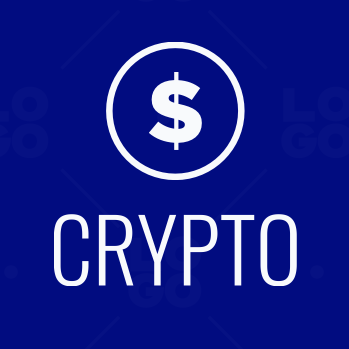Key Takeaways
- Ethereum remains the top blockchain for launching secure, smart contract–based tokens in 2025–2026.
- Compliance and utility are now as critical as code—projects must meet evolving global standards.
- Smart contract automation and Layer 2 scaling have made token deployment faster, cheaper, and more accessible than ever.
Ethereum’s Staying Power in 2025
In a landscape of rapidly emerging blockchains, Ethereum continues to dominate as the foundation for decentralized finance (DeFi), NFTs, and enterprise tokenization. By 2025, Ethereum’s Proof-of-Stake (PoS) network—combined with powerful Layer 2 solutions like Arbitrum, Optimism, and Base—has transformed token launches from a niche technical experiment into a mainstream digital economy tool.
Whether you’re building a governance token, a stable asset, or a digital loyalty coin, understanding how to launch a token on Ethereum now requires more than technical know-how. It demands awareness of compliance, scalability, and user experience, reflecting how the blockchain ecosystem has matured by 2026.
Understanding What a Token Really Is
A token represents a digital asset that runs on an existing blockchain—in this case, Ethereum. Tokens can embody nearly anything: a share in a project, voting rights, access to a service, or even a digital representation of physical goods.
Most tokens follow Ethereum’s ERC standards:
- ERC-20: For fungible tokens (cryptocurrencies, stablecoins, governance tokens).
- ERC-721: For non-fungible tokens (NFTs representing unique assets).
- ERC-1155: For hybrid collections that combine both types.
These standards ensure that tokens can easily integrate with wallets, exchanges, and dApps across Ethereum’s expanding ecosystem.
Step 1: Define the Purpose and Utility
Before any code is written, a project must clearly define why the token exists.
In 2025, investors and communities are far more discerning than during the ICO boom of the late 2010s. A token without a practical use case—such as governance, staking, or access to digital services—rarely gains traction.
Successful launches in 2025–2026 typically revolve around utility-driven ecosystems:
- DeFi tokens that grant reduced fees or governance rights.
- Gaming tokens that represent in-game currency or player ownership.
- Corporate tokens that reward brand engagement or track carbon credits.
A clear value proposition ensures the token is not just another speculative asset but part of a sustainable digital model.
Step 2: Choose the Right Network Layer
Ethereum’s mainnet remains the gold standard for token credibility—but transaction fees (gas costs) can fluctuate. That’s why many projects now deploy on Layer 2 networks, which settle on Ethereum but offer lower fees and faster confirmation times.
In 2025, Polygon, Arbitrum, Base, and zkSync dominate as go-to scaling solutions. These networks allow tokens to retain Ethereum’s security while providing a smoother user experience—a critical factor for mainstream adoption.
Step 3: Develop and Audit the Smart Contract
The backbone of any Ethereum token is its smart contract—self-executing code that defines token supply, transfers, and permissions. Modern token deployment tools (like OpenZeppelin, Remix, and Foundry) have streamlined this process.
However, in 2025, the emphasis is firmly on security and auditability. Even small vulnerabilities can lead to millions in losses, as seen in prior DeFi breaches.
Reputable projects now undergo third-party audits and often open-source their contracts to build community trust.
Emerging AI tools in 2026 can also auto-audit contracts for common exploits before deployment—a major leap in blockchain safety and efficiency.
Step 4: Ensure Legal and Regulatory Compliance
The 2025–2026 landscape is far more regulated than in previous years. Token issuers must comply with jurisdiction-specific digital asset laws, which may classify certain tokens as securities or utilities depending on their use.
Key compliance steps include:
- Know Your Customer (KYC) and Anti-Money Laundering (AML) integration.
- Clear whitepaper disclosures on token utility and governance.
- Registration or exemptions in jurisdictions like the EU (MiCA), U.S., and Singapore.
Many projects now partner with legal-tech compliance providers that automate jurisdiction checks during launch—making it easier to stay transparent and lawful.
Step 5: Deploy and Distribute Responsibly
Once the contract is ready, it’s deployed to Ethereum (or a Layer 2 chain). Deployment involves sending the compiled contract via a wallet like MetaMask or a CLI tool to the blockchain network.
After deployment, token distribution begins. Responsible projects use vesting schedules for founders, liquidity pools for trading, and community airdrops for early supporters.
In 2025, token distribution is less about hype and more about building a participatory community—a trend reinforced by DAOs and decentralized governance models that ensure transparency and fairness from the start.
Beyond Launch: Building Real Utility
Launching a token is just the beginning. The next challenge is creating an ecosystem where that token thrives.
By 2026, the most successful tokens are integrated into real products, such as:
- Access passes to decentralized platforms.
- Incentives in decentralized social networks.
- Governance tools for online communities and DAOs.
Projects that treat tokens as functional assets—not speculative instruments—are the ones driving the sustainable Web3 economy forward.
Challenges Ahead
While the process has simplified, launching a token on Ethereum in 2025–2026 still comes with challenges:
- High gas volatility: Though improved, network congestion can still spike fees.
- User onboarding: Non-technical users may struggle with wallets or private keys.
- Market saturation: With thousands of tokens launching monthly, differentiation is key.
Still, Ethereum’s developer community and interoperability make it the most trusted environment for innovation.
Conclusion: Ethereum’s Role in a Tokenized Future
Knowing how to launch a token on Ethereum is no longer reserved for crypto veterans. In 2025 and 2026, it’s a strategic skill for businesses, creators, and communities entering the digital ownership era.
Ethereum’s open standards, robust security, and thriving ecosystem ensure that despite new challengers, it remains the beating heart of token innovation.
As the internet becomes increasingly tokenized, the winners will be those who not only launch tokens—but build meaningful economies around them.




